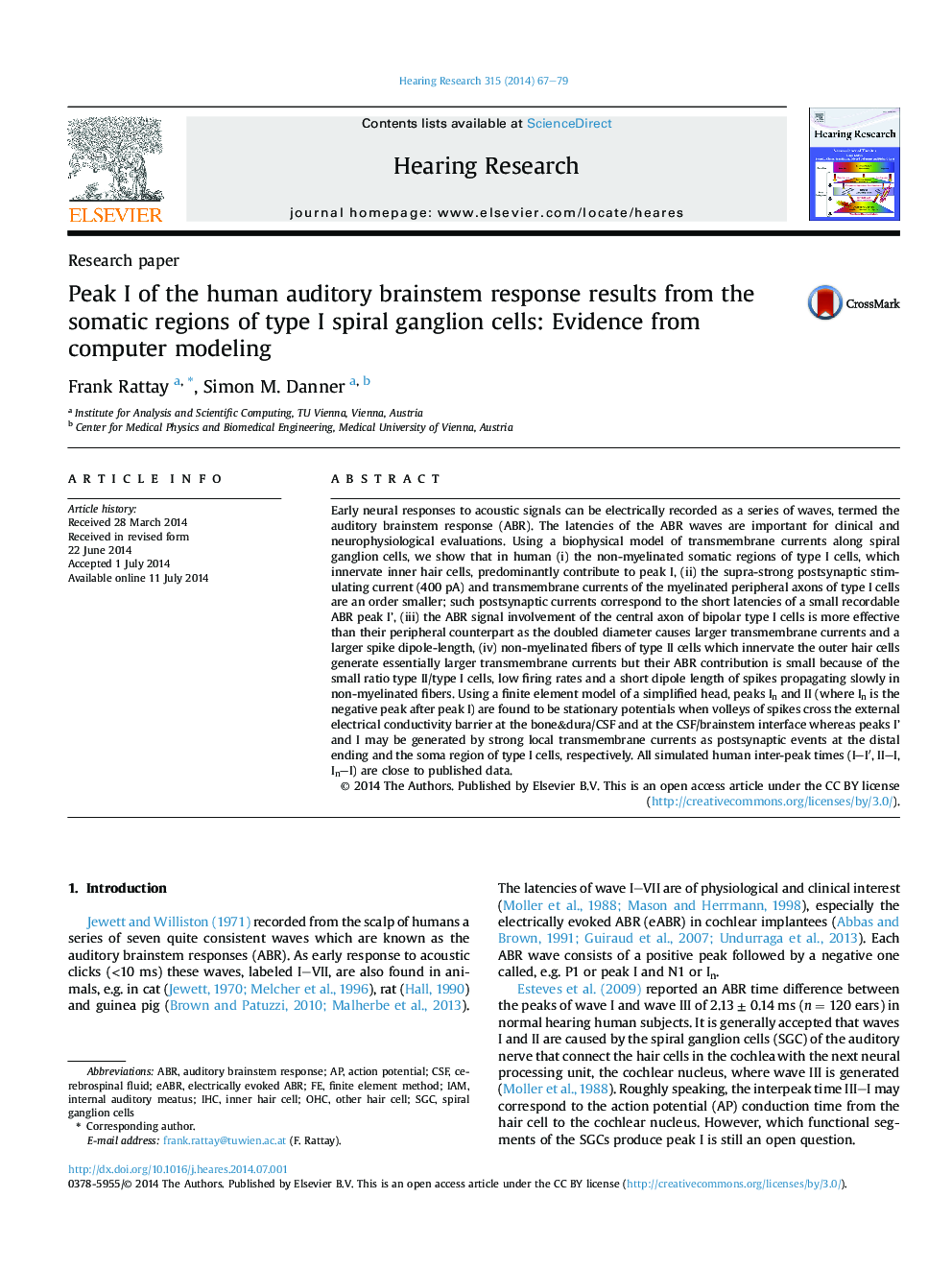| Article ID | Journal | Published Year | Pages | File Type |
|---|---|---|---|---|
| 6287368 | Hearing Research | 2014 | 13 Pages |
Abstract
Early neural responses to acoustic signals can be electrically recorded as a series of waves, termed the auditory brainstem response (ABR). The latencies of the ABR waves are important for clinical and neurophysiological evaluations. Using a biophysical model of transmembrane currents along spiral ganglion cells, we show that in human (i) the non-myelinated somatic regions of type I cells, which innervate inner hair cells, predominantly contribute to peak I, (ii) the supra-strong postsynaptic stimulating current (400Â pA) and transmembrane currents of the myelinated peripheral axons of type I cells are an order smaller; such postsynaptic currents correspond to the short latencies of a small recordable ABR peak I', (iii) the ABR signal involvement of the central axon of bipolar type I cells is more effective than their peripheral counterpart as the doubled diameter causes larger transmembrane currents and a larger spike dipole-length, (iv) non-myelinated fibers of type II cells which innervate the outer hair cells generate essentially larger transmembrane currents but their ABR contribution is small because of the small ratio type II/type I cells, low firing rates and a short dipole length of spikes propagating slowly in non-myelinated fibers. Using a finite element model of a simplified head, peaks In and II (where In is the negative peak after peak I) are found to be stationary potentials when volleys of spikes cross the external electrical conductivity barrier at the bone&dura/CSF and at the CSF/brainstem interface whereas peaks I' and I may be generated by strong local transmembrane currents as postsynaptic events at the distal ending and the soma region of type I cells, respectively. All simulated human inter-peak times (I-Iâ², II-I, In-I) are close to published data.
Keywords
Related Topics
Life Sciences
Neuroscience
Sensory Systems
Authors
Frank Rattay, Simon M. Danner,
